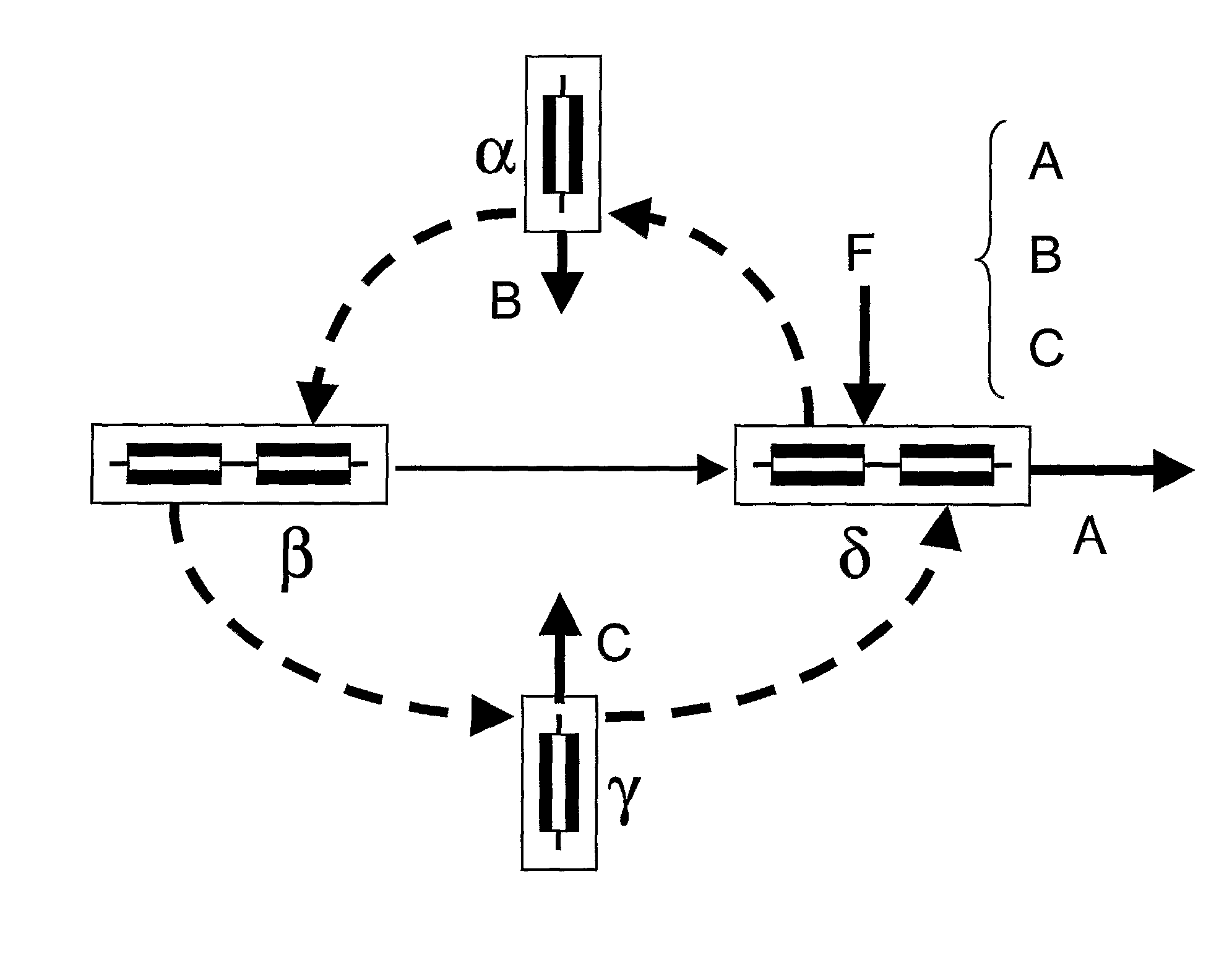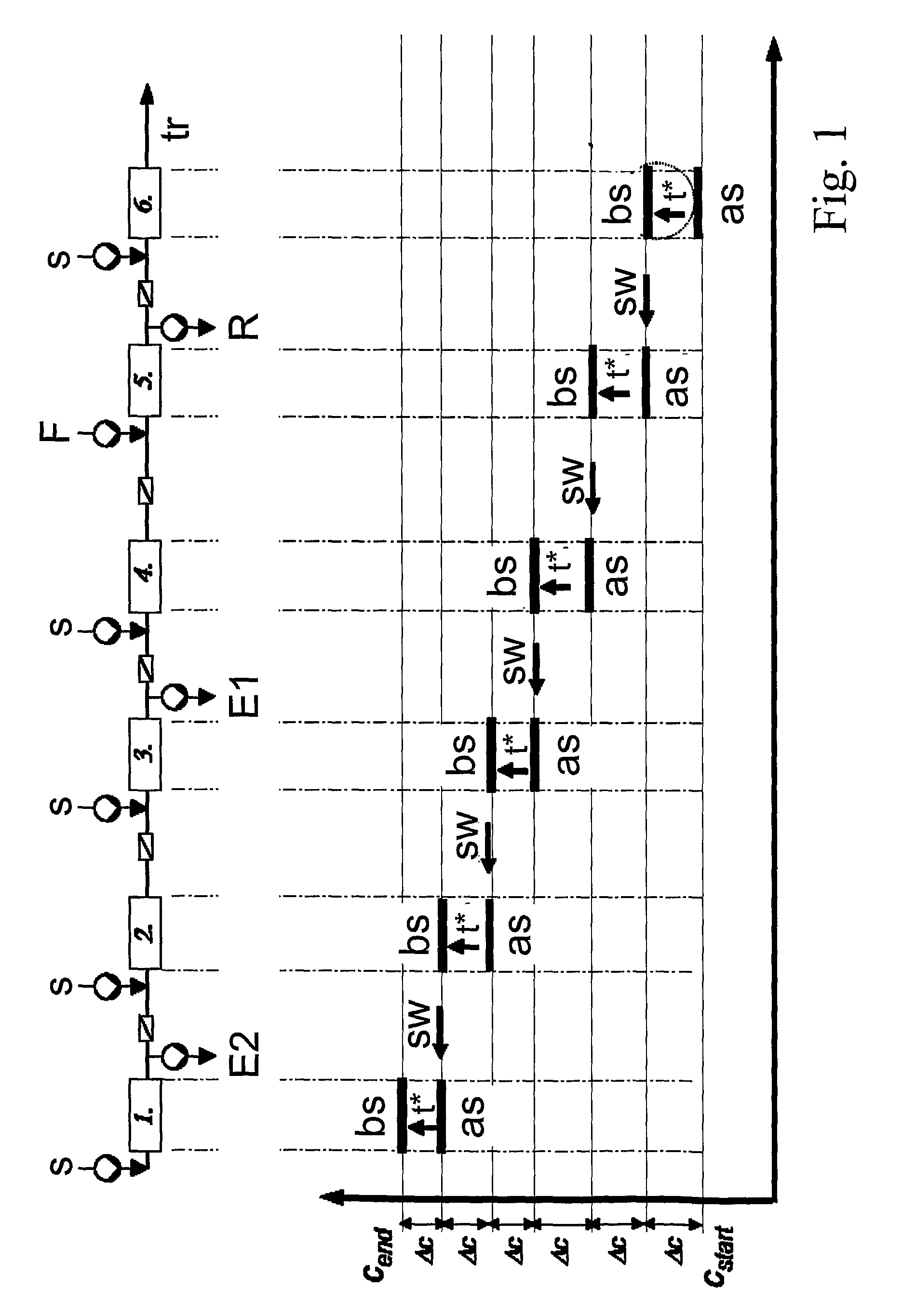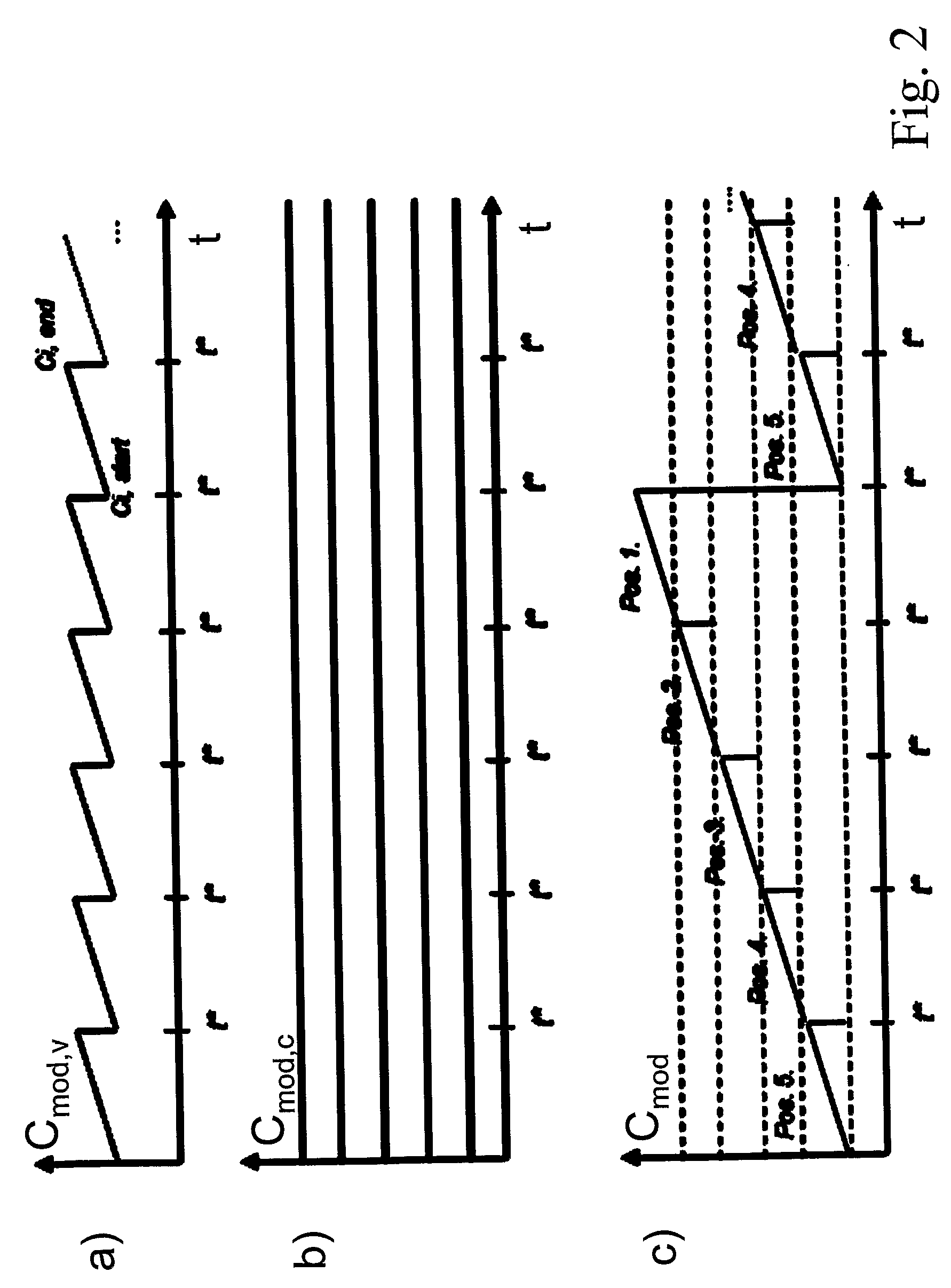Method and device for chromatographic purification
a chromatographic and purification technology, applied in the field of multi-column purification processes, can solve the problems of high cost of chromatography, laborious and expensive technique, waste of such processes, etc., and achieve the effect of high purity and high yield
- Summary
- Abstract
- Description
- Claims
- Application Information
AI Technical Summary
Benefits of technology
Problems solved by technology
Method used
Image
Examples
experimental verification
Purification of Calcitonin
[0149]The novel process has been experimentally verified with an 8 column open loop system as shown in FIG. 15. Input parameters for the experiment are taken from a simulation. The figure below is equivalent to FIG. 6. The chromatogram as well as the solvent gradient is split into tasks, fulfilled by the four sections α-β-γ-δ. The process is fully analogue to the gradient batch elution, but enables countercurrent recycling of the non pure side-fractions in section δ and between section β and δ.
[0150]The 8 columns inside the four sections have the following tasks:
Section γ: (1 column)
[0151]Column 1. wash component C out of the system.
Section β: (1 column)[0152]Column 2. wash out a small valuable amount of B, which is contaminated by C. To recycle B, the liquid outlet stream of column 2. is washed into column 5.
Section α: (1 column)[0153]Column 3. wash out the purified product B. Fresh solvent is used to guarantee the highest possible purity.
Section δ: (5 col...
PUM
| Property | Measurement | Unit |
|---|---|---|
| flow rate | aaaaa | aaaaa |
| volume | aaaaa | aaaaa |
| flow rate | aaaaa | aaaaa |
Abstract
Description
Claims
Application Information
 Login to View More
Login to View More - R&D
- Intellectual Property
- Life Sciences
- Materials
- Tech Scout
- Unparalleled Data Quality
- Higher Quality Content
- 60% Fewer Hallucinations
Browse by: Latest US Patents, China's latest patents, Technical Efficacy Thesaurus, Application Domain, Technology Topic, Popular Technical Reports.
© 2025 PatSnap. All rights reserved.Legal|Privacy policy|Modern Slavery Act Transparency Statement|Sitemap|About US| Contact US: help@patsnap.com



